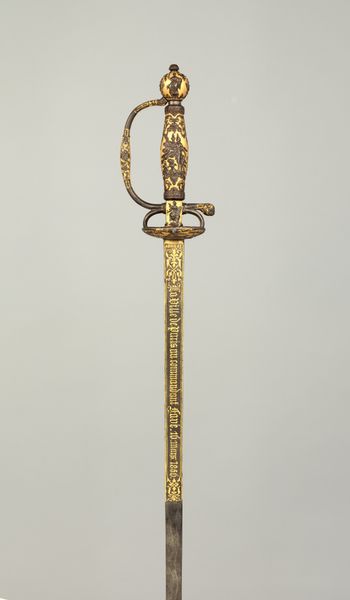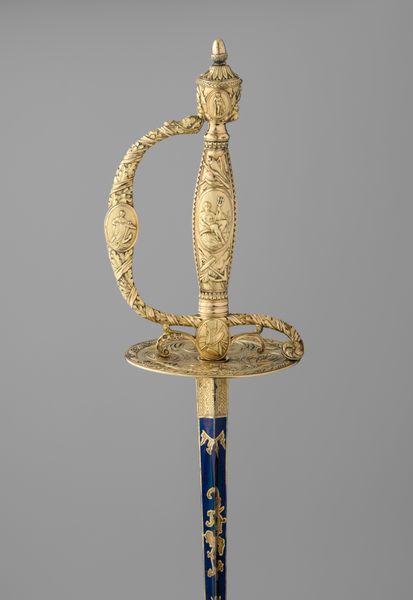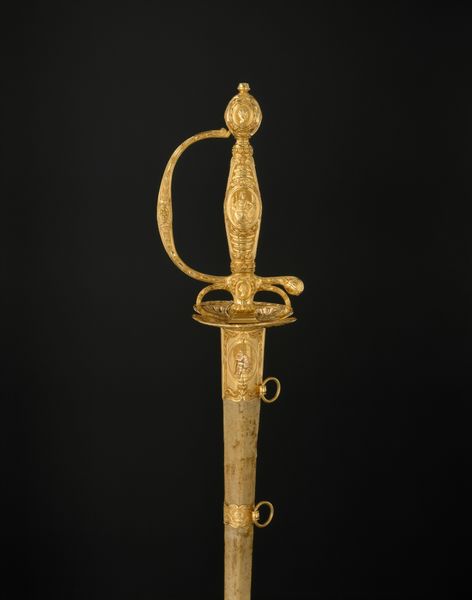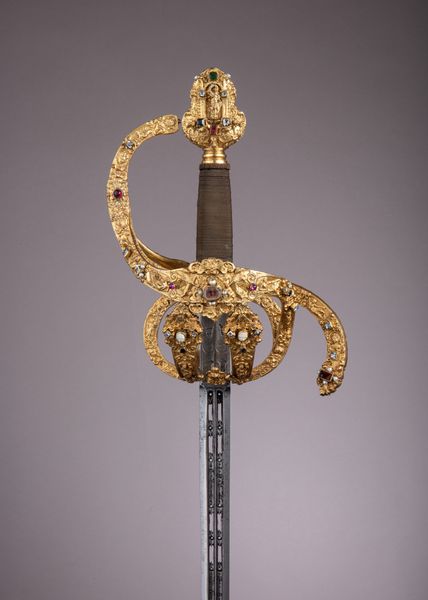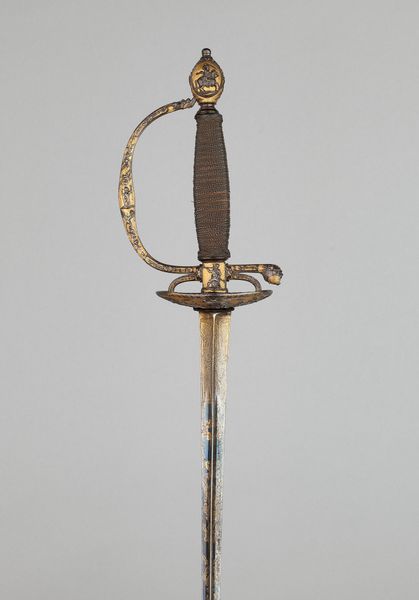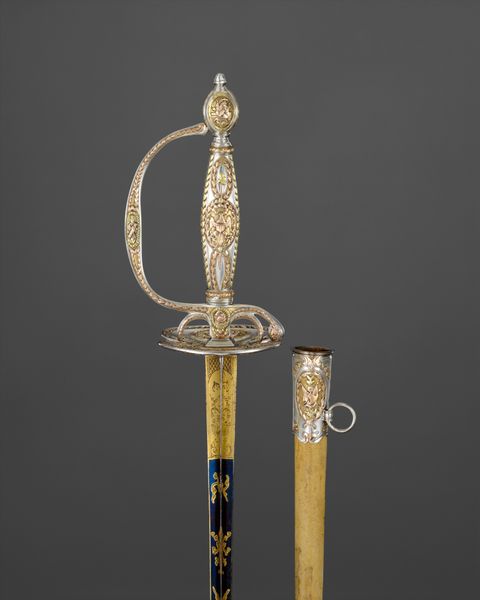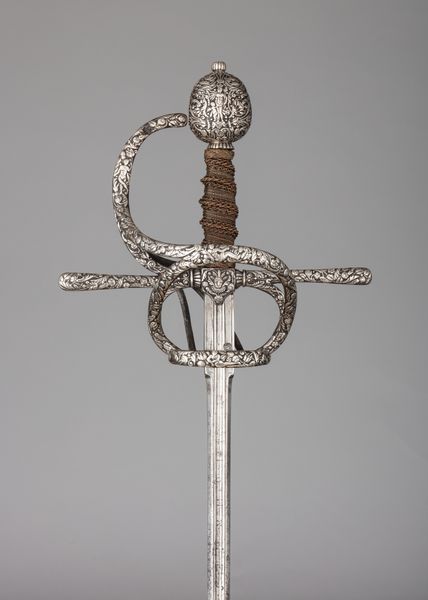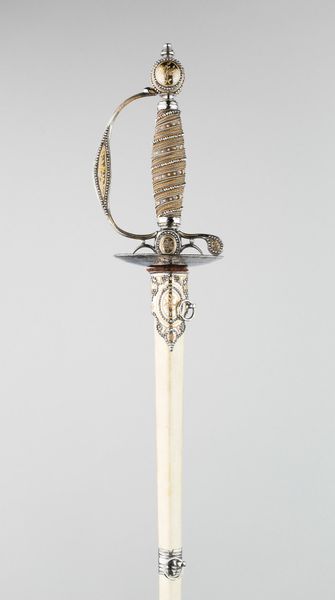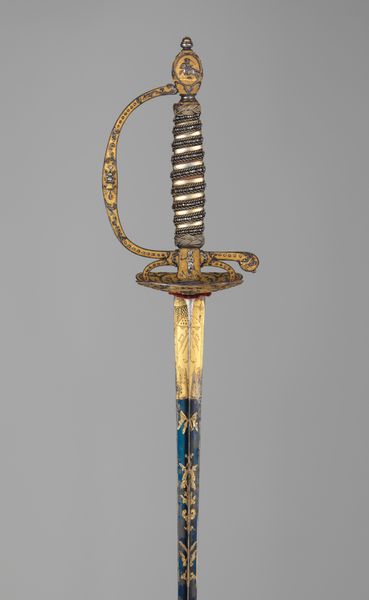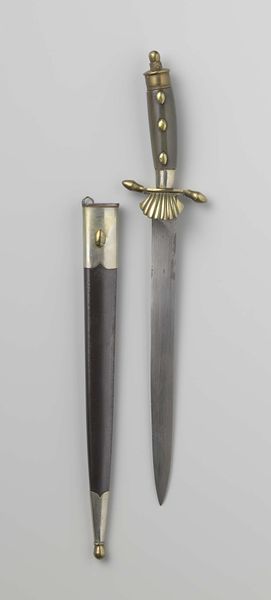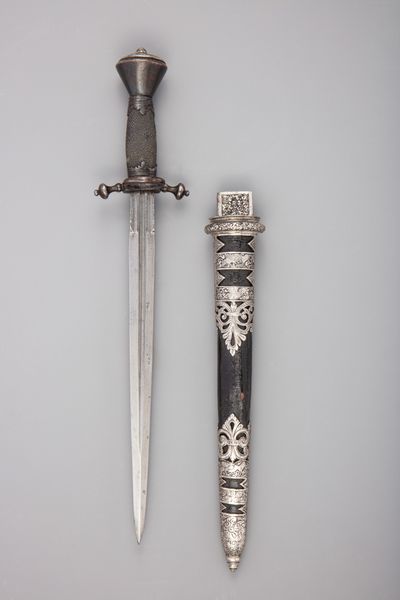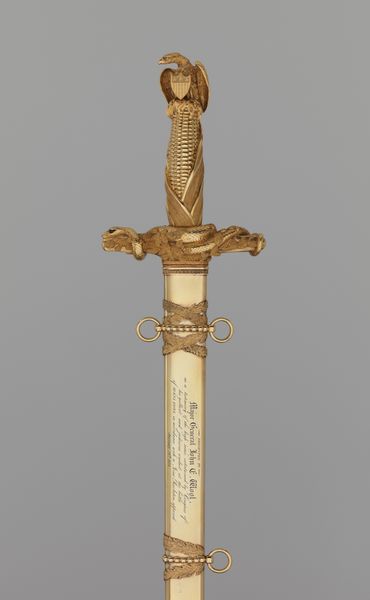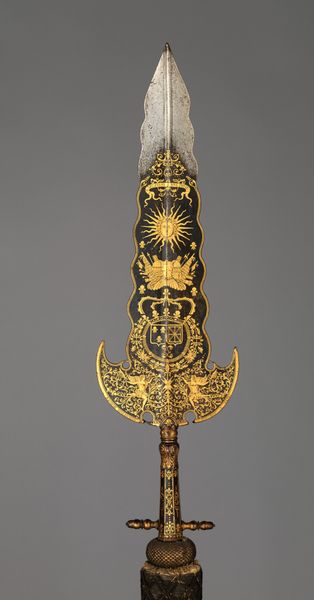
Congressional Presentation Sword and Scabbard of Peleg K. Dunham (1794–1822) 1817
0:00
0:00
metal, gold, sculpture, engraving
#
neoclacissism
#
metal
#
sculpture
#
gold
#
sculpture
#
united-states
#
history-painting
#
armor
#
engraving
#
sword
#
arm
Dimensions: L. with scabbard 39 5/16 in. (99.8 cm); L. without scabbard 38 1/2 in. (97.8 cm); L. of blade 32 5/16 in. (82 cm); W. 4 5/8 in. (11.7 cm); D. 1 7/8 in. (4.7 cm); Wt. 1 lb. 11 oz. (888 g); Wt. of scabbard 1 lb. 1 oz. (481.9 g)
Copyright: Public Domain
Curator: Here we have an exquisitely crafted Congressional Presentation Sword and Scabbard, awarded to Peleg K. Dunham in 1817. Made by William Rose Senior, it's a magnificent example of neoclassical metalwork and engraving. Editor: Wow, the gold ornamentation just gleams! It has a strange, haunting elegance—especially knowing what swords ultimately represent. Curator: Swords like these were more symbolic than practical by the 19th century, you see. A token of esteem for military service. Think of the historical and social weight imbued in that gesture, particularly as the country sought to legitimize itself. Editor: I can see that. But it feels deeply tied to notions of power and honor… power gained through potential violence. I wonder what Dunham, the recipient, thought about its implications beyond mere acknowledgement. What wars did he fight in? What was the sword's connection to the politics of his identity as a white American military officer in that era? Curator: Dunham distinguished himself during the War of 1812. These presentation swords were acts of patriotic institution-building. Each detail, from the neoclassical motifs to the American eagle, tells a story of a nation forging its identity through military accomplishment. Editor: Right, the eagle. Nationalism so heavily encoded. The presentation of this must have carried significant public weight at the time. Knowing that such items often legitimized the elite, makes me wonder how communities affected by that militarization may have experienced its display. Curator: Absolutely. Museums contribute to public discourse about such histories, don't you think? We showcase them as emblems of complex moments. Editor: Exactly. It sparks conversations about how the aesthetics of honor often gloss over difficult realities of who is privileged in its performance, which can open dialogues about legacies of inequality. Curator: So, in essence, viewing it through a contemporary lens allows a deeper understanding of not just what it *is* but what it *represents* in terms of social and political values of the past. Editor: And helps us see the power dynamics then that continue, even today, through symbols of nationhood and military prestige. Thank you for elucidating that complex portrait of its past!
Comments
No comments
Be the first to comment and join the conversation on the ultimate creative platform.
